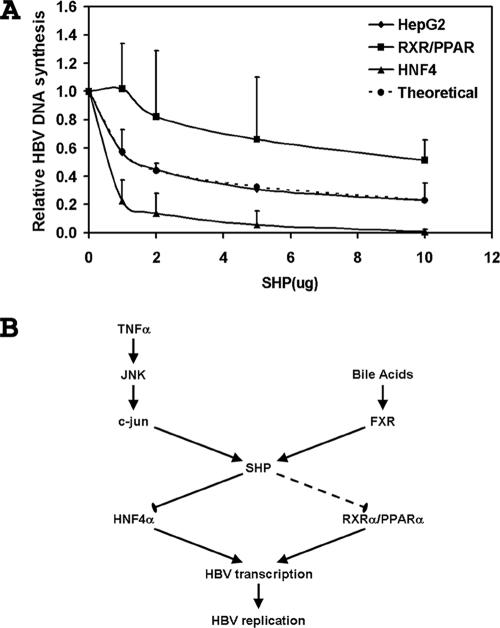FIG. 7.
Multiple transcription factors are targets of SHP inhibition in the human hepatoma HepG2 cell line. (A) Effect of SHP on the relative levels of total HBV DNA replication intermediates in 293T cells in the presence of RXRα/PPARα (RXR/PPAR), 293T cells in the presence of HNF4 (HNF4), and HepG2 cells (HepG2). The levels of the total HBV DNA replication intermediates are reported relative to those of the HBV DNA (4.1-kbp) construct in the absence of SHP expression, which are designated as having a relative activity of 1.0. The mean DNA levels plus standard deviations from Fig. 2 to 4 are shown. A theoretical curve showing the effect of SHP inhibition on total HBV DNA replication intermediates expected if 44% and 56% of the replication were mediated by RXRα/PPARα and HNF4, respectively, is shown. (B) Potential pathways regulating SHP expression in the liver. Cytokines such as TNF-α can activate c-Jun (AP1) through JNK to increase the level of SHP expression, and bile acids can activate FXR to activate the level of SHP expression. The modulation of SHP expression could differentially affect HNF4α- and RXRα/PPARα-mediated HBV transcription and replication in hepatocytes.

